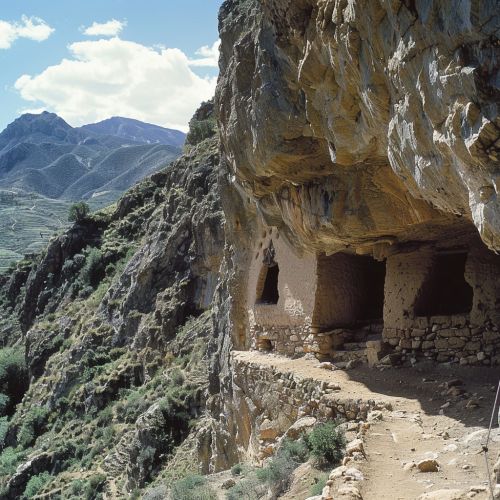Cuevas culture
Origins and Location
The Cuevas culture, named after the Spanish word for "caves", is a prehistoric culture that flourished in the region of modern-day Spain and Portugal. The culture is characterized by its unique cave dwellings, which were carved into the sides of mountains and cliffs. The Cuevas culture is believed to have existed from around 5000 BC to 2000 BC, during the late Neolithic period and the early Bronze Age.


Society and Economy
The Cuevas culture was primarily agrarian, with evidence of farming and animal husbandry. The people of this culture cultivated a variety of crops, including wheat, barley, and legumes. They also raised animals such as sheep, goats, and pigs. The Cuevas culture was also known for its pottery, which was often decorated with intricate geometric designs.
Architecture
The most distinctive feature of the Cuevas culture is its cave dwellings. These were not natural caves, but rather were carved into the sides of mountains and cliffs. The dwellings were often multi-storied, with each floor having multiple rooms. The cave dwellings provided protection from the elements and potential invaders, and also helped to maintain a constant temperature, which was beneficial for storing food.
Religion and Beliefs
Little is known about the religious beliefs of the Cuevas culture. However, archaeological evidence suggests that they practiced some form of ancestor worship. This is evidenced by the presence of burial sites within the cave dwellings, often located in the back of the caves. The bodies were typically buried with grave goods, suggesting a belief in an afterlife.
Decline and Legacy
The Cuevas culture gradually declined around 2000 BC, likely due to a combination of environmental changes and the arrival of new cultures. Despite its decline, the Cuevas culture left a lasting legacy in the form of its cave dwellings, many of which are still standing today. These dwellings provide a unique glimpse into the lives of the people of the Cuevas culture, and are a testament to their architectural ingenuity.
